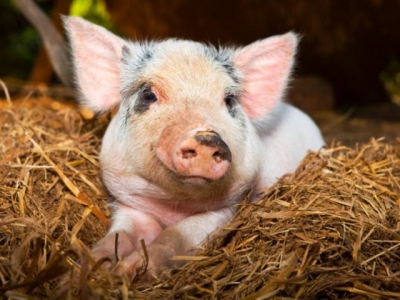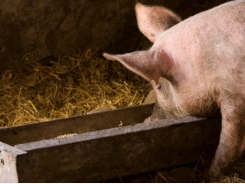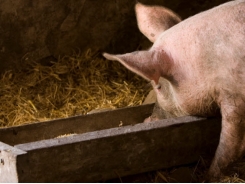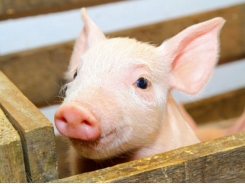Breeding and feeding interplay could make monogastric production more robust

A process to fractionate protein from grass to leverage such feedstock for pigs and poultry is one of the goals of the five year EU funded Feed-a-Gene project.
Led by France’s agriculture research institute, INRA, the €10m backed Horizon 2020 project aims at making monogastric production more efficient and highly sustainable while helping Europe to reduce its dependency on imported protein sources.
“We are looking to increase the use of feed resources such as by-products of biofuel production or green biomass or to better exploit raw materials to generate protein fractions suitable for each market segment. This can help producers become less reliant on cereal based feeds that are needed for food production,” said Jaap van Milgen, the Feed-a-Gene project coordinator, INRA.
The partners in the consortium, he said, are then also looking to identify and select robust animals that can use these “poorer quality” feeds more efficiently, and also pigs that can deal better with conditions such as heat stress or sanitary challenges.
“Another goal of one of the eight work packages included in the project is the identification of indicators of efficiency such as digestion biomarkers. We also want to look at the kinetics of feed intake to understand the impact of environment and other factors on feeding patterns,” he told us.
Environmental gains
In traditional pig and poultry production systems, the animals are monitored as a group and not on the individual level. “But animals don’t often all have the same requirements. We want to use the latest monitoring and modelling techniques to enable us to customize diets to the needs of the individual animal and to predict that individual animal’s upcoming dietary needs effectively.
In doing so, we want to avoid inefficient use of nutrient resources. We believe we can reduce nitrogen excretion in pigs by 30% by tailoring diets in this way,” said van Milgen.
Collaborative approach
Feed-a-Gene gathers 23 partners from eight European countries along with China. “China is facing similar challenges in its monogastric production systems but perhaps on an even greater scale. Politically the EU Commission is encouraging further collaboration with China in terms of research as that country has long been orientated towards the US,” said the INRA representative.
The European research institutes and higher education organizations involved include IRTA in Spain, Aarhus University in Denmark, Wageningen University in the Netherlands and Newcastle University in the UK.
There are nine industry partners including companies focused on livestock production, innovative technologies for animal breeding, feed production and transformation, and equipment for precision feeding.
“Through our tie-ups with companies such as DuPont or Bühler, we will be exploring the benefits of various enzymes in pig and poultry diets, as well as evaluating the feed in terms of the impact of particle size and whether heat or enzyme treatments make nutrients more bioavailable,” said van Milgen.
But the coordinators of the different work packages will also call on the expertise of other industry stakeholders as they see fit over the next few years, he said.
A fundamental objective is to build on work already done under other EU funded digestive efficiency and precision livestock feeding projects and not duplicate that data: “We want to make sure there is a continuation of the excellent research already undertaken in those areas,” said van Milgen.
The first Feed-A-Gene project results will be released in around 12 months’ time. “Of course, we have contractual deliverables in terms of final outcomes but there will be interim reporting. These EU funded Horizon 2020 projects are expected to provide real impact - industry can exploit the commercial aspects and protect their R&D output through patents but the results of our project must be made publically available,” he added.
Related news
Tools

Phối trộn thức ăn chăn nuôi

Pha dung dịch thủy canh

Định mức cho tôm ăn

Phối trộn phân bón NPK

Xác định tỷ lệ tôm sống

Chuyển đổi đơn vị phân bón

Xác định công suất sục khí

Chuyển đổi đơn vị tôm

Tính diện tích nhà kính

Tính thể tích ao




 Heat, sodium metabisulfite may help mitigate some contamination…
Heat, sodium metabisulfite may help mitigate some contamination…  Protein amount, not source may guide antibiotic-free swine…
Protein amount, not source may guide antibiotic-free swine…